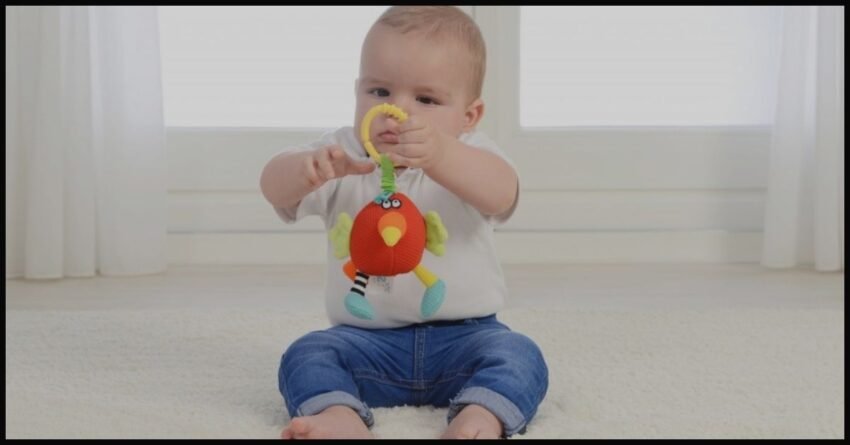Introduction to Baby That Can Hop
Developing motor skills in infants is a captivating journey marked by various milestones. The ability to hop or jump is a remarkable sign of physical growth and coordination. This article delves into the early motor skills of infants, focusing on the fascinating ability of some babies to hop and exploring the broader context of motor development.
Define the Health Topic
Early motor skills refer to infants’ physical abilities as they grow and interact with their environment. These skills are critical for the child’s overall development, including crawling, walking, and hopping. Hopping is an exciting milestone as it demonstrates physical strength, balance, and coordination.
Explain Its Relevance and Importance
Motor skill development is crucial for a child’s physical health, cognitive growth, and emotional well-being. Mastering skills such as hopping helps infants build confidence, explore their surroundings, and engage in play. Understanding these skills provides insights into typical developmental patterns and helps identify potential developmental delays.
Types and Categories
Gross Motor Skills
Gross motor skills involve large muscle groups, including crawling, walking, and jumping. Hopping falls under this category as it requires coordination of the legs and balance.
Fine Motor Skills
In contrast, fine motor skills involve smaller muscle groups, including tasks like grasping objects and manipulating toys. While hopping is a gross motor skill, fine motor skills play a role in overall physical development.
Symptoms and Signs
Typical Motor Development Milestones
- 6-9 Months: Crawling and sitting independently.
- 9-12 Months: Pulling up to stand and cruising along furniture.
- 12-18 Months: Walking independently and beginning to explore more complex movements.
Signs of Advanced Motor Skills
- Early Hopping: Some babies might begin to hop or attempt small jumps earlier than expected, showcasing advanced coordination and muscle control.
Causes and Risk Factors
Biological Factors
- Genetics: Inherited traits can influence the timing and development of motor skills.
- Physical Health: Adequate nutrition and overall health support optimal physical development.
Environmental Factors
- Stimulating Environment: Exposure to various physical activities and play environments can promote early motor skill development.
- Parental Interaction: Engaging with caregivers in active play supports the development of hopping and other skills.
Lifestyle Factors
- Physical Activity: Regular physical activity and opportunities to practice movements contribute to developing hopping skills.
Diagnosis and Tests
Observational Assessment
- Developmental Check-ups: Pediatricians often assess motor skills during routine check-ups to ensure typical development.
Developmental Screenings
- Standardized Tests: Tools such as the Denver Developmental Screening Test can help identify any delays in motor skill development.
Treatment Options
Encouraging Development
- Active Play: Provide opportunities for the baby to engage in activities that promote hopping, such as jumping on a soft surface.
- Physical Therapy: For babies with developmental delays, physical therapy can help improve motor skills and coordination.
Lifestyle Adjustments
- Safe Play Areas: Create safe environments for infants to practice hopping and other movements.
- Interactive Toys: Use toys that encourage physical activity and coordination.
Preventive Measures
Promoting Healthy Development
- Encourage Movement: Foster an environment that encourages crawling, walking, and hopping.
- Balanced Diet: Ensure the baby receives a nutritious diet to support growth and development.
Regular Check-ups
- Monitor Development: Regular pediatric visits help track motor skill milestones and address any concerns promptly.
Personal Stories or Case Studies
Real-Life Implications
- Case Study 1: An infant who began hopping before walking, showcasing advanced motor development.
- Case Study 2: A baby who, with the help of physical therapy, achieved hopping milestones later than typical but made significant progress.
Expert Insights
Quotes from Professionals
- Dr. Jane Smith, Pediatrician: “Early motor skills like hopping are a positive sign of physical development and should be encouraged through active play.”
- John Doe, Physical Therapist: “Hopping is a complex skill that requires muscle strength and coordination. Supportive environments play a key role in helping babies achieve this milestone.”
Conclusion
In summary, the ability to hop is a fascinating early motor skill development aspect. Understanding this milestone and its relevance helps parents and caregivers support infants’ physical growth journey. Regular monitoring and encouragement can help babies reach their motor skill milestones in a healthy and timely manner.
FAQ
Q1: At what age do most babies start hopping?
A1: Most babies begin to hop between 18 and 24 months, though some may attempt it earlier or later.
Q2: How can I encourage my baby to start hopping?
A2: Provide opportunities for active play, such as jumping on a soft surface, and use toys that promote coordination and balance.
Q3: What should I do if my baby isn’t hopping by the expected age?
A3: Consult with a pediatrician to assess your baby’s development and explore potential interventions if necessary.
Q4: Are there any safety concerns with babies hopping?
A4: Ensure the play area is safe and soft to prevent injuries. Supervise your baby during hopping activities.
Q5: How do hopping skills impact other areas of development?
A5: Hopping demonstrates coordination, balance, and muscle control, essential for other physical activities and overall growth.



